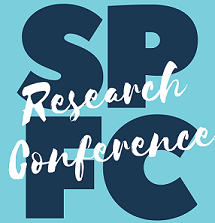Impacts of sensory challenges on attentional control in young children with autism
Faculty-Student Collaboration
1
Faculty Sponsor(s)
Beverly J. Wilson, Ph.D.
Presentation Type
Event
Project Type
Research in progress
Primary Department
Clinical Psychology
Description
Individuals with autism (ASD) experience challenges with attention and sensory. Because sensory challenges often co-occur in up to 90-95% of individuals with ASD, it is important to examine the role of sensory with attention in ASD. Participants included 170 children. Sensory and attention were measured via the ABC and the CBQ, respectively. Results found that ASD exhibited more sensory symptoms and that sensory symptom severity increases resulted in impaired attention. Sensory severity also mediated the relation between status and attention, suggesting that increased sensory negatively impacted attention and that this disposition is more heavily influenced by sensory differences in ASD.
Copyright Status
http://rightsstatements.org/vocab/InC/1.0/
Additional Rights Information
Copyright held by author(s).
Impacts of sensory challenges on attentional control in young children with autism
Individuals with autism (ASD) experience challenges with attention and sensory. Because sensory challenges often co-occur in up to 90-95% of individuals with ASD, it is important to examine the role of sensory with attention in ASD. Participants included 170 children. Sensory and attention were measured via the ABC and the CBQ, respectively. Results found that ASD exhibited more sensory symptoms and that sensory symptom severity increases resulted in impaired attention. Sensory severity also mediated the relation between status and attention, suggesting that increased sensory negatively impacted attention and that this disposition is more heavily influenced by sensory differences in ASD.



Comments
This poster was also presented at International Society for Autism Research, Montreal, Quebec, Canada, May 2019